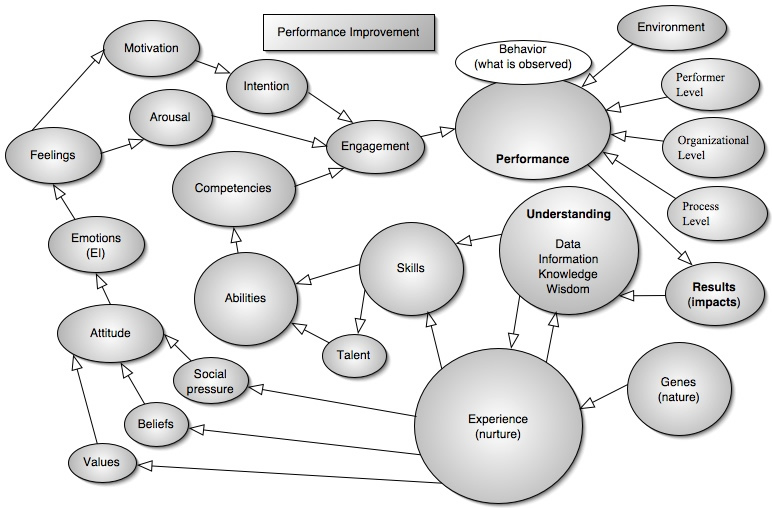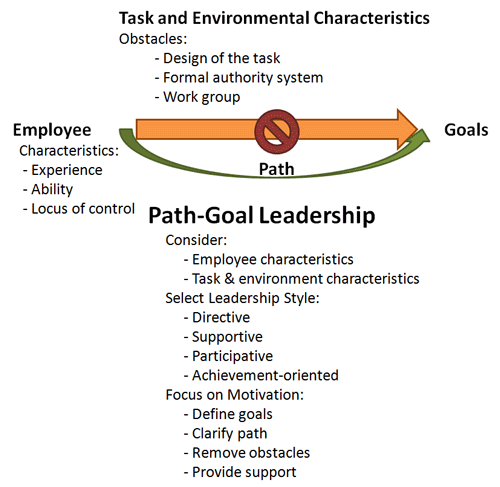A Timeline of Management and Leadership
1880 - Scientific Management
Frederick Taylor decides to time each and every worker at the Midvale Steel Company. His view of the future becomes highly accurate:
"In the past man was first. In the future the system will be first." - Frederick Taylor
In scientific management the managers were elevated while the workers' roles were negated.
"Science, not rule of thumb, - Frederick Taylor
The decisions of supervisors, based upon experience and intuition, were no longer important. Employees were not allowed to have ideas of responsibility. Yet the question remains — is this promotion of managers to center-stage justified?
1929 - Taylorism
The Taylor Society publishes a revised and updated practitioner's manual:Scientific Management in American Industry.
1932 - The Hawthorne Studies
Elton Mayo becomes the first to question the behavioral assumptions of scientific management. The studies concluded that human factors were often more important than physical conditions in motivating employees to greater productivity.
1946 - Organization Development
Social scientist Kurt Lewin launches the Research Center for Group Dynamics at the Massachusetts Institute of Technology. His contributions in change theory, action research, and action learning earn him the title of the “Father of Organization Development:” the systematic application of behavioral science knowledge at various levels (group, intergroup, and total organization) to bring about planned change.
Lewin is best known for his work in the field of organization development and the study of group dynamics. His research discovered that learning is best facilitated when there is a conflict between immediate concrete experience and detached analysis within the individual. Also see Organizational Behavior.
1949 - Sociotechnical Systems Theory
A group of researchers from London's Tavistock Institute of Human Relations, led by Eric Trist, studied a South Yorkshire coal mine in 1949. Their research leads in the development of the Sociotechnical Systems Theory which considers both the social and the technical aspects when designing jobs. It marks a 180-degree departure from Frederick Taylor's scientific management. There are four basic components to sociotechnical theory:
- environment subsystem
- social subsystem
- technical subsystem
- organizational design.
1954 - Hierarchy of Needs
Maslow's hierarchy of needs theory is published in his book Motivation and Personality. This provides a framework for gaining employees' commitment.
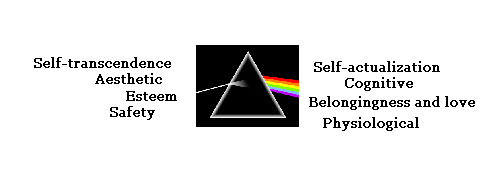
1954 - Leadership/Management
Drucker writes The Practice of Management and introduces the 5 basic roles of managers. He writes:
The first question in discussing organization structure must be: What is our business and what should it be? Organization structure must be designed so as to make possible the attainment of objectives of the business for five, ten, fifteen years hence."
1959 - Hygiene and Motivational Factors
Frederick Herzberg developed a list of factors which are closely based on Maslow's Hierarchy of Needs, except it more closely related to work. Hygiene factors must be present in the job before motivators can be used to stimulate the workers.
1960 - Theory X and Theory Y
Douglas McGregor's Theory X and Theory Y principles influence the design and implementation of personnel policies and practices.
Late 1960s - Action Learning
An Unheralded British academic was invited to try out his theories in Belgium —Action Learning — it leads to an upturn in Belgian's economy.
Unless your ideas are ridiculed by experts they are worth nothing. - the British academic Reg Revens, creator of action learning:
L = P + Q ([L] Learning occurs through a combination of programmed knowledge [P] and the ability to ask insightful questions [Q])
Note that Revens work has had little impact on this side of the ocean, although it remains one of the best ways to learn and to bring about productive change in the organization.
1964 - Management Grid
Robert Blake and Jane Mouton develop a management model that conceptualizes management styles and relations. Their Grid uses two axis. "Concern for people" is plotted using the vertical axis and "Concern for task" is along the horizontal axis. The notion that just two dimensions can describe a managerial behavior has the attraction of simplicity.
1978 - Performance Technology
Tom Gilbert publishes Human Competence: Engineering Worthy Performance. It describes the behavioral-engineering model which become the bible of performance technology. Gilbert wrote that accomplishment specification is the only logical way to define performance requirements. Accomplishments are the best starting points for developing performance standards. In addition, accomplishments are the best tools for the development of performance-based job descriptions as they allow management to describe the measurement that is important to the organization, specific to the position, and observable.

1978 - Excellence
McKinsey's John Larson asks his colleague, Tom Peters, to step in at the last minute and make a presentation that leads to In Search of Excellence. Thus Tom Peters spawns the birth of the “Management Guru Business.”
1990 - Learning Organization
Peter Senge popularized the Learning Organization in The Fifth Discipline: The Art and Practice of the Learning Organization. He describes the organization as an organism with the capacity to enhance its capabilities and shape its own future. A learning organization is any organization (e.g. school, business, government agency) that understands itself as a complex, organic system that has a vision and purpose. It uses feedback systems and alignment mechanisms to achieve its goals. It values teams and leadership throughout the ranks. He called for five disciplines:
- System Thinking
- Personal Mastery
- Mental Models
- Shared Vision
- Team Learning
1995 - Ethics
On December 11, 1995 a fire burned most of Malden Mills to the ground and put 3,000 people out of work. Most of the 3,000 thought they were out of work permanently. CEO Aaron Feuerstein says, “This is not the end” — he spent millions keeping all 3,000 employees on the payroll with full benefits for 3 months until he could get another factory up and running. Why? He answers, “The fundamental difference is that I consider our workers an asset, not an expense.” Related concept — Ethos and Leadership.
Business Process Management (BPM) - 2000
This is actually a slow advance in process management that has the following roots:
- Record Management
- Workflow - 1970
- Business Process Re-engineering (BPR) - 1990
- Business Process Management (BPM) - 2000

Instructional System Design Concept Map
 |
Instructional System Design: The ADDIE Model
A Handbook for Practitioners
Instructional System Design (ISD) is also known as ADDIE (Analysis, Design, Development, Implement, Evaluate) and SAT (System Approach to Training).
I
Introduction
Chapter 1
Analysis
Chapter 2
Design
Chapter 3
Development
Chapter 4
Implement
Chapter 5
Evaluate
Chapter 6
I
Introduction
Chapter 1 |
Analysis
Chapter 2 |
Design
Chapter 3 |
Development
Chapter 4 |
Implement
Chapter 5 |
Evaluate
Chapter 6 |
Appendix and Other Useful Resources
Glossary & Acronyms
Appendixes
Templates
History
Instructional Design for the Exceptional Learner
Glossary & Acronyms
|
Appendixes
|
Templates
|
History
| |
| Instructional Design for the Exceptional Learner | ||||
The Art and Science of Leadership
Welcome to the Art and Science of Leadership, a comprehensive collection of articles and activities for developing leadership skills and knowledge. Becoming a good leader is not easy, but by learning the correct skills and knowledge, putting them into practice, and then adapting them to different situations, will put you well on your way.
To select a chapter from the Leadership Manual, click on the subject of your choice in the below leadership manual or go to the Leadership Mind Map to select a subject.
Leadership Manual
The guide is divided into three sections, Basics of Leadership, Team Leadership, and Advanced Leadership Skills.
Basics of Leadership
- Concepts of Leadership: definition, principles, factors, processes, and difference from management
- Leading: basic leadership skills, such as goal setting, supervision, and inspiring
- Direction: planning with the Shewhart Cycle and problem solving
- Leadership Models: Four Framework Approach and the Managerial Grid
- Human Behavior Part I: Hierarchy of Needs, Hygiene and Motivation Factors, Theory X/Y
- Human Behavior Part II: Expectancy Theory and ERG Theory
- Motivation: allowing the needs of your team to coincide with the needs of your organization
- Counseling and Performance Appraisals: helping employees develop in order to achieve organizational goals
- Social Leadership: using social interactions and social media to create great teams
- Authentic Leadership and Social Influence: being consistent with a your personality and core values, and that is honest, ethical, and practical
- Leadership Styles: the manner and approach of providing direction, implementing plans, and motivating people
- Transformational Leadership: changing the basic political and cultural systems of an organization
- Character and Traits of Good Leaders: being a person of honorable character
- Ethos and Leadership: ethics for leaders
- After Action Review: steps, guidelines, and strategies for capturing lessons learned
Team Leadership
- Growing A Team: becoming a team leader
- Matrix Teams: creating a cross-functional teams to accomplish more through the use of knowledge and skill sharing
- Team Leadership Model: a road map to help diagnose team problems and then take appropriate action to correct team problems
Advanced Leadership Skills
- Horizontal Leadership: Flattening the Organization: moving beyond hierarchical or vertical leadership
- The Four Pillars: Leadership, Management, Command, and Control
- Path-Goal Theory of Leadership: using a leadership style or behavior that best fits the employee and work environment in order to achieve goals
- Organizational Behavior: elements and models of organization behavior and development
- Diversity: all employees, from the CEO to the hourly workers, need to realize that to become the best, they have to embrace diversity
- Diversity Continuum: valuing diverse groups and cultures
- Change: reshaping to the needs of a rapidly changing world.
- Learning Organization: the level of performance and improvement needed in today's ever-changing environment requires learning
- Mentoring: types of mentoring, finding a mentor, development, and creating a mentorship program
- Visioning: moving the organization forward by looking towards the future
- Sensemaking: the social nature and complexities of visualization
- Strategy & Tactics: strategies are forward-looking, while tactics are more or less present or now-orientated
- OODA Loop: decision making cycle of observing, orienting, deciding, and acting
Supporting Skills
- Time Management: nothing can be substituted for time, once wasted, it can never be regained
- Meetings: creating memorable meetings by preparing, conducting, and following-up
- Communication: the exchange and flow of information and ideas from one person to another
- Presentations: how to communicate ideas and information to a group
There is no such thing as a perfect leader, either in the past or present, in China or elsewhere. If there is one, he is only pretending, like a pig inverting spring onions into his nose in an effort to look like an elephant. - Liu Shao-ChiLesson Learned—we must consistently strive to improve ourselves.
Learning Activities
The Leadership Development Outline contains the above leadership guide, plus a variety of developmental tools, such as surveys, case studies, and reflective activities for each chapter.
Leadership Development Model
Click image for a larger diagram
Learning Concept Map
Click on a desired topic on the below concept map or use the topic list on the left.
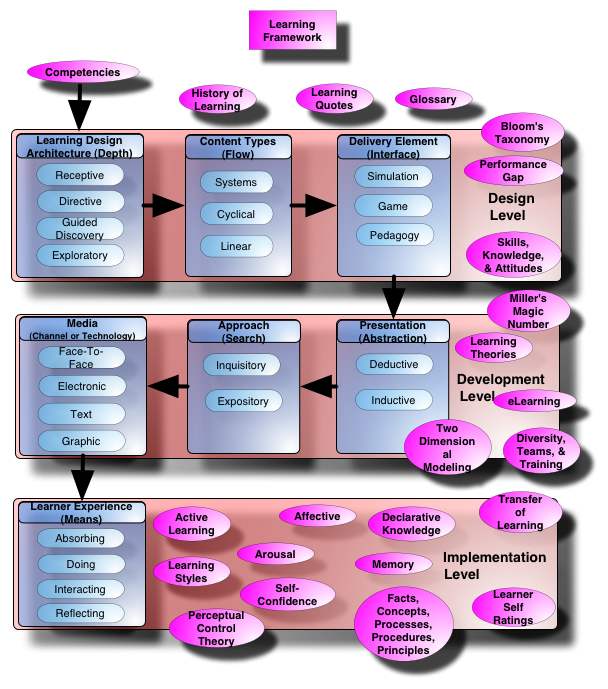
More Learning Concepts
Informal/Formal Learning — Social Learning & Media — Blended Learning — The Three Representational Modes: Linguistic Learning, Nonlinguistic Learning, and Affective Learning — Self, Metacognition, Cognition, and Knowledge Systems — Interactive Mindmap of Learning Models — Cognitive Task Analysis — A Table of Five Design Models
Related Pages
- Leadership Definitions
- Leadership Quotes
- Frequently Asked Questions on Leadership
- The New Face of Leadership: Implications for Higher Education
- Mission Statements
- Leadership Books
- Leadership Links Page
While not part of the leadership section, these pages should be of interest to those studying leadership:
- Completing the Zen in Performance Management
- 70-20-10 Leadership Development Model vs. 3-33 Pervasive Learning Model
- Coaching
- History of Management
Learning Topics
- Active Learning
- Affective
- Arousal
- Artifacts
- Blended Learning
- Bloom's Taxonomy
- Competencies
- Declarative Knowledge
- Delivery
- Design Approach:
- Design Architecture
- Diversity, Teams, and Training
- eLearning
- Flow
- Informal/Formal Learning
- Learning Activities (creating)
- Learner Experience:
- Facts, Concepts, Processes, Procedures, Principles
- Glossary
- History of Learning
- Instruction:
- Learning Framework
- Learning Styles
- Learning Theories
- Learning Quotes
- Learner Self Ratings
- Media
- Memory
- Miller's Magic Number
- Perceptual Control Theory
- Performance Gap
- Self-Confidence
- Social Learning & Media
- Knowledge, Skills, & Attitudes (KSA)
- Transfer of Learning
- Two Dimensional Modeling
“The very essence of leadership is that you have to have a vision. It's got to be a vision you articulate clearly and forcefully on every occasion.” — Theodore Hesburgh, President of the University of Notre Dame
Knowledge, Learning, & Performance Resources
Learning & Knowledge News | Podcasts | Blogs |
Delivering the Learning Platform in Instructional Design
The Implementation phase is where the learning and training products, processes, and services are actually delivered to the learners. This total package is called a Learning Platform.
A learning platform is an integrated set of services that provide the learners with information (content); tools, such as social learning media; activities; and resources, that support and enhance their quest to learn new skills and knowledge and supports the learners' Personal Learning Environment (PLE).
To some, this may sound like the easy part, but it can be the hardest part of the system. Good trainers can make a poorly designed program work well and a well designed program work great... bad trainers can make neither work. If the learning platform is delivered in a different manner, such as elearning or a Job Performance Aid, the platform must still be supported.
Jim Heskett, a Harvard Business School professor wrote (2009):
“Learning is more strongly influenced by individual teachers, for example, than any other factor, including class size and quality of the facilities. In various studies, the truly great teachers do things like giving good, individualized feedback while remaining sensitive and responding to interactions going on around them that might indicate needs of other students.”
Through their experience, training, and education, skilled instructors are able to transform an inanimate platform into a living experience for the learners.
 The learning platform may consist of only a small single piece of courseware, such as a 20 minute elearning course, a mobile performance support app, or a blending learning environment that consists of of several pieces of courseware, such as classroom, elearning, and performance support that takes several hours or days to complete.
If the learning platform has no instructors assigned to it, such as a stand-alone elearning program, then other means should be provided to assist the learners when they need it, such as a support line, discussion group, Twitter contact (micro blog), etc.
The learning platform may consist of only a small single piece of courseware, such as a 20 minute elearning course, a mobile performance support app, or a blending learning environment that consists of of several pieces of courseware, such as classroom, elearning, and performance support that takes several hours or days to complete.
If the learning platform has no instructors assigned to it, such as a stand-alone elearning program, then other means should be provided to assist the learners when they need it, such as a support line, discussion group, Twitter contact (micro blog), etc.
“Learning is more strongly influenced by individual teachers, for example, than any other factor, including class size and quality of the facilities. In various studies, the truly great teachers do things like giving good, individualized feedback while remaining sensitive and responding to interactions going on around them that might indicate needs of other students.”

Underlying Support
The Analysis, Design, and Development phases provided the underlying support to ensure the learning platform:
- Performs as predicted (solves a real business need)
- Flows with the job performance needs (improves job performance rather than interrupt it)
- Supports all training and learning needs
- Ensure the learners see the training as important and doable so that they are motivated to engage in it (Markus, Ruvolo, 1990)
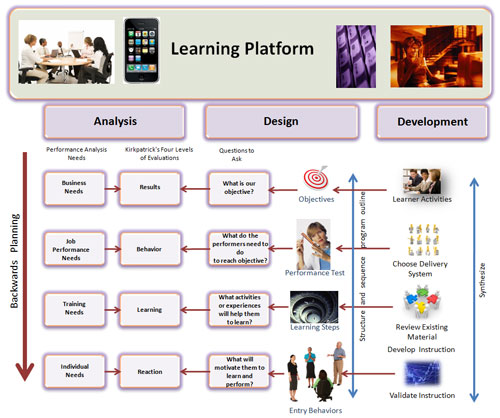

Beyond Implementation
You might think of the Implementation or Delivery phase as just “starting the training;” however it actually starts with creating the Learning Management Plan (LMP) that outlines the steps and required resources to successfully implement the learning platform. It informs the learning/training team how to deliver the training according to plan and with maximum learner involvement. Non-trainer led learning platforms, such as a stand-alone elearning program, should also include a LMP.
Go to the next section: Learning Management Plan
Analysis Phase
Analysis is the study we do in order to figure out what to do - Allison Rossett & Kendra Sheldon (2001)
The analysis phase is the foundation of a learning or training process. The deliverables of this phase are the building blocks for all subsequent design and development activities. It accomplishes this by discovering:
-
Desired business need or result
-
If a learning process will fulfill the desired business need
-
Performance requirements that supports desired business outcome
-
What must be learned
-
The standards of performance
-
How the learning process will occur
-
Who needs to improve their performance
This analysis phase is sometimes called a Front-End Analysis in that while you normally perform some type of analysis throughout the entire ADDIE process, this “front end” of the process is where the main problem identification is performed, such as identifying the problem, analyzing the job and selecting the tasks to train (U.S. Army Field Artillery School, 1984)
It includes both a Training Needs Analysis (TNA) and a Needs Assessment.
The TNA is performed to see if a learning or training solution will solve a business problem (Tovey, 1997). Managers will often call a performance problem a training problem. Thus you must ensure that a learning or training solution will fix the problem or if a different solution is needed.
A Needs Assessment is performed to determine and articulate the business unit or customer's learning, training, and performance needs (DeSimone, Werner, 2012).
Analysis is the study we do in order to figure out what to do - Allison Rossett & Kendra Sheldon (2001)
Desired business need or result
If a learning process will fulfill the desired business need
Performance requirements that supports desired business outcome
What must be learned
The standards of performance
How the learning process will occur
Who needs to improve their performance
Backwards Planning or Design Model
When performing an analysis, it is best to use a backwards planning approach, which is also known as backwards design and backwards mapping. This is accomplished by identify your goal and then determining the actions that will most likely help you to effectively and efficiently arrive at the goal. This allows you to create benchmarks for determining how success your planning is.
-
Result - What impact (outcome) will improve our business?
-
Performance - What do the employees have to perform in order to create the desired impact?
-
Learning - What knowledge, skills, and resources do they need in order to perform? (courses or classrooms are the LAST answer, see Selecting the Instructional Setting)
-
Motivation - What do they need to perceive in order to learn and perform? (Do they see a need for the desired performance?)
As the next section shows, you can easily check to see if your solution to the four planning steps are correct.
Result - What impact (outcome) will improve our business?
Performance - What do the employees have to perform in order to create the desired impact?
Learning - What knowledge, skills, and resources do they need in order to perform? (courses or classrooms are the LAST answer, see Selecting the Instructional Setting)
Motivation - What do they need to perceive in order to learn and perform? (Do they see a need for the desired performance?)
A Circular Causality Model for Human Performance
Using the chart below helps you to evaluate your results after the plan is put into action — this is known as circular causality. Start at the top left-hand corner and then follow the arrows:
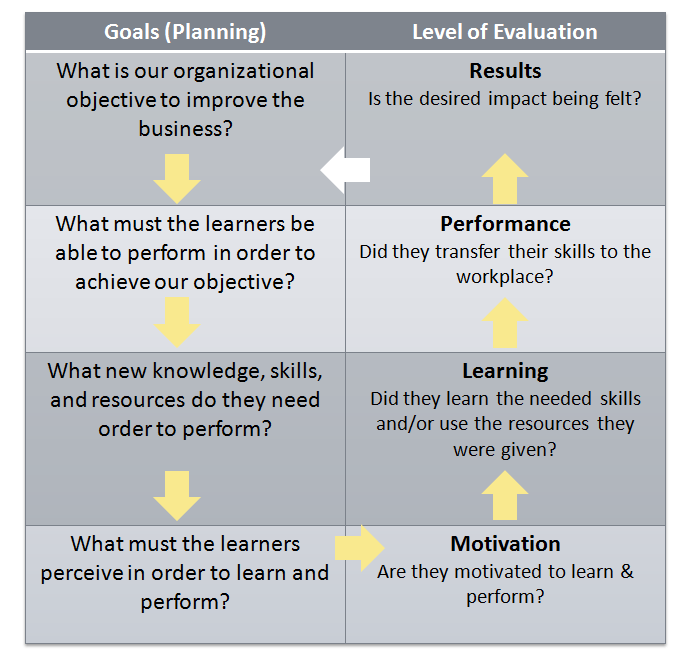

Chart 1
Notice that each effect on a event effects the next one, which has an effect-cause-effect that loops back upon the original event. When you reach the last arrow, the white one, you should have reached the result or impact you were looking for. If not, then you will have to troubleshoot your plan, correct it, and then repeat all or part of the process.
The Four Performance Analysis Needs
The backwards planning model is based on Kirkpatrick's Four Levels of Evaluations that have been linked to what is known as the Four Performance Analysis Needs. (Phillips, Phillips, 2002):
Charts 2 and 3, as shown below, shows how the two concepts are linked together and the primary questions that must be answered to complete the analysis:
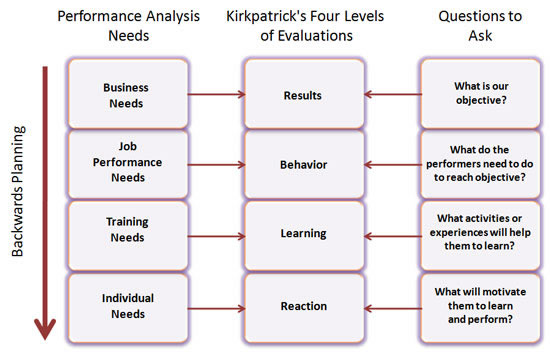

Chart 2
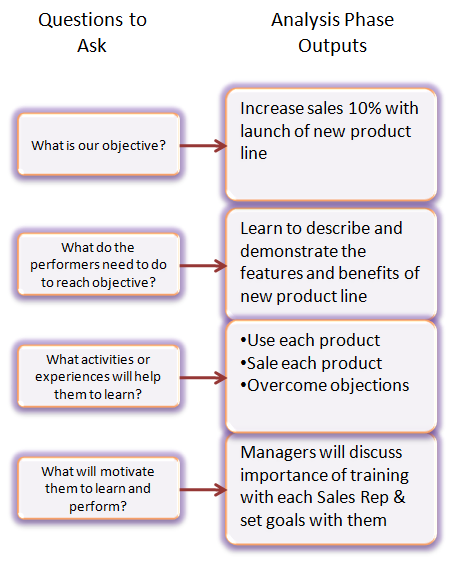
Chart 3
The Four Performance Analysis Needs are discussed below.
Business Needs
To determine the business need, investigate the problem or performance initiative to see how it supports the mission statement, leader's vision, and/or organizational goals. Fixing a problem or making a process better is just as good as a Return on Investment (ROI), if not better. Organizations that focus strictly on ROI are normally focusing on cost-cutting. And you can only cut costs so much before you start stripping out the core parts of a business. A much better approach is to improve a performance or process that supports a key organization goal, vision, or mission.
When senior executives were asked the most important training initiatives, 77% cited, “aligning learning strategies with business goals”; 75% cited, “ensuring learning content meets workforce requirements”; and 72% said, “boosting productivity and agility” (Training Magazine, 2004). Thus, senior leaders are not looking at training to be a profit center (that is what other business units are for), rather they are looking at performance improvement initiatives to help grow the organization so that it can reach its goals and perform its mission.
Job Performance Needs
This analysis looks at the job performance needed to solve the business need by asking, “What do the workers need to perform in order to meet the desired business need?” This can best be accomplished by finding the gap between the present performance and the desired future performance and then creating a solution to fix it.
This is perhaps the most important need to look at as it links the performer with the organization. When analyzing job performance, you want to look at the entire spectrum that surrounds the job: processes, environment, actual performance verses needed performance, etc, thus, it often helps to divide the analysis into three groups: people, data, and things. If you only look at what they need to learn and then perform, then you might miss obstacles that will impede their performance, such as poor processes or environmental roadblocks.
Learning Needs
As you assess the performance for any needed interventions, look at theJob/Performer requirements, that is, what does the performer need to know and do to be successful? In addition, look at how you are going to evaluate anylearning requirements (level 2). It is one thing to determine the needs of the performers (such as skill, knowledge, & their self-system [attitude, metacognition, etc.]), but it is quite another thing to ensure that those requirements actually take place.
In addition, include performance aids or tools used in place of learning. For example, rather than memorizing a list of steps to perform, provide them a checklist, such as paper or electronic. This reduces the amount of time needed for training and helps to speed up the time to actual performance.
Individual Needs
The Individual Needs align with Kirkpatrick's Reaction (see chart 1 above). However, Kirkpatrick's Reaction was mostly concerned with the level of the learner's happiness with the learning program.
What this stage really needs is to ensure that the performance intervention (learning process) actually conforms to the individual requirements.
For example, in the Training Needs analysis it might be determined that the job holders need to learn a new process. In this need assessment, the target population is looked at more closely to determine the actual content, context, and delivery method of the performance intervention that will best fit their needs. The goal is to ensure that the intended learners see the real worth of the learning program. If you and their managers cannot convince them that they need to learn and perform correctly, then they will probably never learn to to perform or once they complete the learning program, they will probably not put their newly learned skills and knowledge to full use. Note that I highlighted “and their managers” as people will most often perform what their managers expect them to do, while forgetting what the managers least emphasize.
Thus the individual needs are the foundation of the Four Needs:
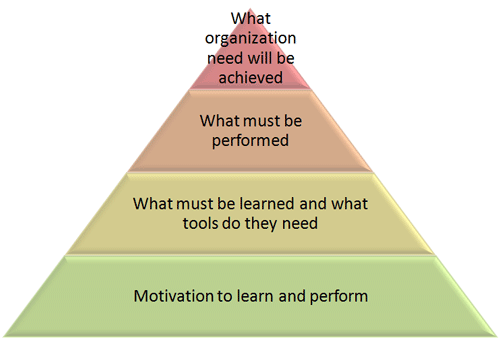

Analysis Resources
Designing from the learners' perspectives
If the problem is too complex, Simplicity Combats Complexity
A study by the National Center on the Educational Quality of the Workforce at the University of Pennsylvania found that a dollar invested by a company in education was more than twice as effective in boosting the firm's productivity as a dollar invested in new machinery —Task Force of the Human Resource Development.
A study by the National Center on the Educational Quality of the Workforce at the University of Pennsylvania found that a dollar invested by a company in education was more than twice as effective in boosting the firm's productivity as a dollar invested in new machinery —Task Force of the Human Resource Development.
Next Steps
Go to the next section: Business Outcome
Return to the Table of Contents
View the Analysis Templates (contains several analysis templates)
View the Analysis Page
References
Bassi, L., McMurrer, D. (2007). Maximizing Your Return on People. Harvard Business Review, March 2007, Reprint R0703H.
DeSimone, R.L., Werner, J.M. (2012). Human Resource Development. Mason, Ohio: South-Western College Pub.
Phillips, J., Phillips, P. (2002). Reasons Why Training & Development Fails... and What You Can Do About It. Training Magazine, September 2002, pp.78-85.
U.S. Army Field Artillery School (1984). A System Approach To Training (Course Student textbook). ST - 5K061FD92.
Rossett, A., Sheldon, K. (2001). Beyond the Podium: Delivering Training and Performance to a Digital World. San Francisco: Jossey-Bass/Pfeiffer, p.67.
Tovey, M.D. (1997). Training in Australia. Sydney: Prentice Hall of Australia.
Task Force of the Human Resource Development (2001). Are You Getting the Results You Need? In Getting Results Through Learning. University of North Texas Libraries and the U.S. Government Printing Office. Retrieved fromhttp://govinfo.library.unt.edu/npr/library/book/results.htm
Bloom's Revised Taxonomy: Cognitive processes and levels of knowledge matrix
Bloom's Revised Taxonomy (Remember - Understand - Apply - Analyze - Evaluate - Create) not only improved the usability of it (using action words), but perhaps also made it more accurate. However, probably the best feature — the matrix — is often left unnoticed. While Bloom's original cognitive taxonomy did mention three levels of knowledge or products that could be processed (shown below), they were not discussed very much and remained one-dimensional. The three levels are:
However, others have identified five contents or artifacts (Clark, Chopeta, 2004; Clark, Mayer, 2007):
For more on Bloom's Taxonomy, see:
- Factual - The basic elements students must know to be acquainted with a discipline or solve problems.
- Conceptual – The interrelationships among the basic elements within a larger structure that enable them to function together.
- Procedural - How to do something, methods of inquiry, and criteria for using skills, algorithms, techniques, and methods.
- Metacognitive – Knowledge of cognition in general, as well as awareness and knowledge of one’s own cognition.
The Cognitive Dimension
| The Knowledge Dimension | Remember | Understand | Apply | Analyze | Evaluate | Create |
|---|---|---|---|---|---|---|
| Factual | ||||||
| Conceptual | ||||||
| Procedural | ||||||
| Metacognitive |
Facts - Specific and unique data or instance.
Concepts - A class of items, words, or ideas that are known by a common name, includes multiple specific examples, shares common features. There are two types of concepts: concrete and abstract.
Processes - A flow of events or activities that describe how things work rather than how to do things. There are normally two types: business processes that describe work flows and technical processes that describe how things work in equipment or nature. They can be thought of as the big picture, of how something works.
Procedures - A series of step-by-step actions and decisions that result in the achievement of a task. There are two types of actions: linear and branched.
Principles - Guidelines, rules, and parameters that govern. It includes not only what should be done, but also what should not be done. Principles allow one to make predictions and draw implications. Given an effect, one can infer the cause of a phenomena. Principles are the basic building blocks of causal models or theoretical models (theories).
The Cognitive Dimension
| The Knowledge Dimension | Remember | Understand | Apply | Analyze | Evaluate | Create |
|---|---|---|---|---|---|---|
| Facts | ||||||
| Concepts | ||||||
| Processes | ||||||
| Procedures | ||||||
| Principles | ||||||
| Metacognitive |
An example matrix that has been filled in might look something like this:
| The Knowledge Dimension | Remember | Understand | Apply | Analyze | Evaluate | Create |
|---|---|---|---|---|---|---|
| Facts | list | paraphrase | classify | outline | rank | categorize |
| Concepts | recall | explains | demonstrate | contrast | criticize | modify |
| Processes | outline | estimate | produce | diagram | defend | design |
| Procedures | reproduce | give an example | relate | identify | critique | plan |
| Principles | state | converts | solve | differentiates | conclude | revise |
| Metacognitive | proper use | interpret | discover | infer | predict | actualize |
- The Three Domains of Learning
- Cognitive Domain
- Revised Taxonomy of the Cognitive Domain
- Cognitive Process and Levels of Knowledge Matrix
- SOLO Taxonomy
- Affective Domain
- Psychomotor Domain
- Learning Strategies: Using Bloom's Taxonomy
5.05.2014
A to Z of Learning
aLearning (Alpha Learning) - To begin to understand, but not fully comprehend (has not groked or gLearned)
bLearning - (Blended Learning) - A mixture of media, such as cLearning and eLearning (brick and click)
cLearning - (Classroom Learning) - Learning in a classroom or formal setting
dLearning - (distance Learning) - Learning from an electronic device, such as eLearning, mLearning, or pLearning. May also include other media that is sent to the learner, such as mail
eLearning - (Electronic Learning) - Learning from the Internet (part of dLearning)
fLearning - (Formal Learning) - The learning goals are determined by instructional designers (learners may provide input)
gLearning - (Grok Learning) - To understand profoundly and intuitively (also see aLearning)
hLearning - (Horizontal Learning) - Learning something based on a horizontal continuum (there is no one right answer). It can best be learned in an collaborative learning environment (also see zLearning)
iLearning - (Informal Learning) - The learning goals are determined by the learner (organization may provide input)
jLearning - (Just in Time Learning) - Learning something at the moment of need and it sticks (not easily forgotten, also see qLearning)
kLearning - (Kindergarten Learning) -The basic skills Learned in Kindergarten that carry you throughout life
lLearning - (Laptop Learning) - Learning from a laptop computer
mLearning - (Mobile Learning) - Learning while away from home or office with a smart phone (may include pLearning or lLearning)
nLearning - (nonformal Learning) - The learning goals are determined by the business unit, such as manager or supervisor, normally used with oLearning (OJT)
oLearning - (OJT Learning) - Learning on the job through the direction of others (also see vLearning)
pLearning - (Pad Learning) - Learning from an electronic pad, such as an iPad or Galaxy
qLearning - (Quick Learning) - Learning something at the moment of need and it does not stick or is never used again (also see jLearning)
rLearning - (Redundant Learning) - Learning until one has thoroughly mastered a skill (trying to learn more will be useless). Sometimes call over-learning. Security and medical teams often use this method so it becomes second-nature
sLearning - (Social Learning) - Learning with or through other people (see uLearning for opposite)
tLearning - (Team Learning) - Used when two or more members of a team must learn different tasks that must be coordinated so that it increases the effectiveness of the team
uLearning - (Unilateral Learning) - Learning without the help of others (see sLearning for opposite)
vLearning - (Various Learning) - Learning various perspectives by gaining experience (normally on the job). Differs from oLearning in that vLearning is directed by the learner rather than a manager
wLearning - (Walking Around Learning) - Learning while walking around, normally through observation (adapted from Tom Peters' managing by walking around)
xLearning - (Xenodochial Learning) - Learning from others, especially in a diverse group of people who know little about each other, and they expect nothing in return
yLearning - (Yeoperson Learning) - Learning something that will promote the good of the common people or people in need
zLearning - (Zebra Learning) - Learning that is monochrome in nature (has only one correct answer or shade). May be easily learned through a cooperative learning environment (see hLearning for opposite)
bLearning - (Blended Learning) - A mixture of media, such as cLearning and eLearning (brick and click)
cLearning - (Classroom Learning) - Learning in a classroom or formal setting
dLearning - (distance Learning) - Learning from an electronic device, such as eLearning, mLearning, or pLearning. May also include other media that is sent to the learner, such as mail
eLearning - (Electronic Learning) - Learning from the Internet (part of dLearning)
fLearning - (Formal Learning) - The learning goals are determined by instructional designers (learners may provide input)
gLearning - (Grok Learning) - To understand profoundly and intuitively (also see aLearning)
hLearning - (Horizontal Learning) - Learning something based on a horizontal continuum (there is no one right answer). It can best be learned in an collaborative learning environment (also see zLearning)
iLearning - (Informal Learning) - The learning goals are determined by the learner (organization may provide input)
jLearning - (Just in Time Learning) - Learning something at the moment of need and it sticks (not easily forgotten, also see qLearning)
kLearning - (Kindergarten Learning) -The basic skills Learned in Kindergarten that carry you throughout life
lLearning - (Laptop Learning) - Learning from a laptop computer
mLearning - (Mobile Learning) - Learning while away from home or office with a smart phone (may include pLearning or lLearning)
nLearning - (nonformal Learning) - The learning goals are determined by the business unit, such as manager or supervisor, normally used with oLearning (OJT)
oLearning - (OJT Learning) - Learning on the job through the direction of others (also see vLearning)
pLearning - (Pad Learning) - Learning from an electronic pad, such as an iPad or Galaxy
qLearning - (Quick Learning) - Learning something at the moment of need and it does not stick or is never used again (also see jLearning)
rLearning - (Redundant Learning) - Learning until one has thoroughly mastered a skill (trying to learn more will be useless). Sometimes call over-learning. Security and medical teams often use this method so it becomes second-nature
sLearning - (Social Learning) - Learning with or through other people (see uLearning for opposite)
tLearning - (Team Learning) - Used when two or more members of a team must learn different tasks that must be coordinated so that it increases the effectiveness of the team
uLearning - (Unilateral Learning) - Learning without the help of others (see sLearning for opposite)
vLearning - (Various Learning) - Learning various perspectives by gaining experience (normally on the job). Differs from oLearning in that vLearning is directed by the learner rather than a manager
wLearning - (Walking Around Learning) - Learning while walking around, normally through observation (adapted from Tom Peters' managing by walking around)
xLearning - (Xenodochial Learning) - Learning from others, especially in a diverse group of people who know little about each other, and they expect nothing in return
yLearning - (Yeoperson Learning) - Learning something that will promote the good of the common people or people in need
zLearning - (Zebra Learning) - Learning that is monochrome in nature (has only one correct answer or shade). May be easily learned through a cooperative learning environment (see hLearning for opposite)
3.16.2014
Simplicity Combats Complexity
James Murphy, a former F-15 fighter jet pilot and now CEO of a team building company, notes in arecent article that “complexity is the mortal enemy of good execution, and our world is nothing if not increasingly complex.” Thus, in order to execute in an ever increasing complex word, we need to break it down in simple steps:
 These tools, Murphy's Process, AAR, OODA, Cynefin, and Agile Design are designed for working in complex environments. What other processes or models do you use for dealing with complexity?
These tools, Murphy's Process, AAR, OODA, Cynefin, and Agile Design are designed for working in complex environments. What other processes or models do you use for dealing with complexity?
- Planning: If your planning process tries to run the whole gauntlet of complexity then you will simply get beat up by it, so use short-tem timelines.
- Briefing; Get everyone on the same page.
- Executing: Just do it.
- Debriefing. The purpose of the debrief is to make adjustments ... to discover lessons learned. This can best be accomplished by performing an After Action Review:
- What were our intended results?
- What were our actual results?
- What caused our results?
- What will we sustain or improve?
- Repeat process so that you are refining and continually improving.
OODA
Col. John Boyd, USAF (Ret) has a similar process called the OODA Loop:- Observe: Scan the environment and gather information from it.
- Orient: Use the information to form a mental image of the circumstances and place it into context.
- Decide: Consider options and select a subsequent course of action.
- Act: Just do it.
- Repeat process so that you are refining and continually improving.
Probe, Sense, Respond
David Snowden of Cognitive Edge also has a similar tool for dealing with complexity in his Cynefinmodel:- Probe: Make a change (prototype) in the environment in order to test it.
- Sense: Review it by determining the impact of the probe.
- Respond: Depending upon the result you achieve you either amplify the probe or suppress it, and then repeat.
Agile Design
And the last one for dealing with complex environments — Agile Design:- Select the project and develop the vision.
- Initiate the project by obtaining stakeholder participation, funding, and build team.
- Deliver small working iterations that meet the changing needs of the stakeholders. Continue this step until:
- Release (End Game) by deliver the final package.
- Production: operate, maintain and support the system.

3.03.2014
Full Spectrum Learning
The U.S. Army has developed its answer to the 70-20-10 Learning model and Dan Pontefract's 3-33 Pervasive Learning model. However, they did a couple of twists by:

Secondly, the use of percentages or ratios, such as 70-20-10 and 3-33, imply that they are predictive models, rather than reference models. In fact, the creators of 70-20-10 wrote that it is a predictive model. This can be noted in dozens of blog posts in which some very smart authors note 70-20-10 is a predictive model model and then are told in the comment sections that it is a reference model. If you do a image search on Google for the term "reference model" (may NSFW as it shows a couple of nude models) you will notice that none of the images are based on percentages or ratios.
What are your thoughts on the three models?
- dumping the percentages
- combining Experience with Social Learning
- adding Education
- adding two continuums - Responsibility and Ambiguity

Percentages
70-20-10 has been problematic in at least two ways. As Dan Pontefract notes in his book, Flat Army, it is based on leaders who were in charge of hierarchical, command and control cultures that were prevalent in the 1980s. While the U.S. Army does have a hierarchical command and control culture due to its nature, it is also composed of flat or horizontal teams (large and small) that operate alone and with each other in complicated environments that often border on the edge of chaos. Thus, it is both a hierarchical and flat organization that not only approximates how most successful organizations operate today, but is also based on all people, rather than just senior leaders.Secondly, the use of percentages or ratios, such as 70-20-10 and 3-33, imply that they are predictive models, rather than reference models. In fact, the creators of 70-20-10 wrote that it is a predictive model. This can be noted in dozens of blog posts in which some very smart authors note 70-20-10 is a predictive model model and then are told in the comment sections that it is a reference model. If you do a image search on Google for the term "reference model" (may NSFW as it shows a couple of nude models) you will notice that none of the images are based on percentages or ratios.
Experience has Social Learning in a Learning Environment
The Full Spectrum Learning model realizes that if you are gaining experience to learn, then it is implied that you will be using plenty of informal and social learning, along with smaller amounts of training and education. In order to build skills and knowledge via experiences, the environment must contribute to peer-based learning through blogs, wikis, micro-blogs, and other social based media. It leverage these social tools to build dynamic vertical and horizontal social networks for formal and informal information sharing in order to foster critical thinking and problem solving skills needed for operational adaptability.The Addition of Education
In Human Resource Development, training is normally associated with learning to perform a present job or task, while education is normally associated with learning to perform a future job or task. Thus, in a rapidly changing world, education through formal and/or nonformal environments is a required component if an organization wants to remain competitive. For example, during our last recession, companies dumped thousands of people in mass layoffs. Now they are whining that they cannot find people who have the education and training that they require. Good organizations should always be building a path towards the future by educating people to walk that path.The Responsibility and Ambiguity Continuums
Rather than build a learning model that focuses on one fixed point, the U.S. Army created the Full Spectrum Learning model on two continuums based on the degree of responsibility of the learner and the degree of ambiguity of the learning environment to give it depth.What are your thoughts on the three models?
2.27.2014
Social Leadership
I wrote a new a new article about social leadership for my leadership manual. The sections in the article include:
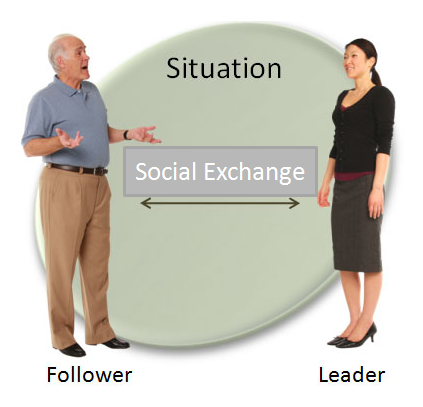
- 5+2 Major Behavior Patterns of Leaders
- Social Exchanges
- Social Judgment Skills for Leaders
- Social Interactions Trump Engagement Surveys
- Social Media for the New Social Leader

10.31.2013
6.04.2013
Designing in the Linear... but Repeated
Prophet. "You value your ignorance of what is to come?"
Sisko, "That may be the most important thing to understand about humans. It is the unknown that defines our existence. We are constantly searching, not just for answers to our questions, but for new questions. We are explorers. We explore our lives, day by day. And we explore the galaxy, trying to expand the boundaries of our knowledge. And that is why I am here. Not to conquer you with weapons or ideas, but to co-exist and learn."
- Deep Space Nine: Emissary
Sometimes we think of linear design as strictly a step-by-step process that holds no possibility of using our imagination. However, the reality is that when we design in the linear an unlimited number of possibilities can occur. We generally try to set some sort of strategy with our design. With each new consequence that our strategy creates, the final design begins to take on more shape. But we never really know what will happen until we come to the end.
In contrast, dynamic design (nonlinear) is simply the repetition of a series of linear. This is because we are locked in by the concept of time — we exist in the linear. Of course, each repetition should bring something new or we will simply be repeating ourselves. The value of repeating the linear by bringing something new to it is that it brings the possibility of learning from new information. That is, our previous linear experience brought about certain consequences... some of them unintended, thus we now have new information that we can connect with our design.
“The value of any piece of information is only known when you can connect it with something else that arrives at a future point in time,” - Ira “Gus” Hunt.The value of dynamic design is that it allows us to connect new information that we previous didn't have. Each repetition of the linear is called an iteration that normally comes in two forms:
- Design or interpretive iteration — testing a learning method, function, feature, etc. of the learning or training process to see if it's valid.
- Release iteration — releasing it to the business unit or customer even though it may not be fully completed or functional because we believe that it is good enough to be of use.
ADDIE or ISD
ADDIE normally uses two types of Procedural Analysis Methods. When the task to be learned is primarily overt behavior, there are set procedures to follow, and you have an expert performer, Behavioral Task Analysis is normally used. Since this is one of the more easier analysis to perform, few or no design iterations are required.The Information Processing Analysis tool is used when there are both overt steps that require a set order and covert steps that require decision making of a yes or no nature (if, then, else), which means Flow Charts are good tools for this method. Since there are behaviors that cannot be seen, more design iterations are normally needed.
Design Thinking
Design Thinking often uses Rule Based Analysis Methods as there are no set procedure for performing the task and most of the task steps are normally of an overt nature.Two forms of analysis can be used, GOMS Analysis and the Critical Decision Method. The task to be learned may best be represented by one or the other and sometimes both.
GOMS analysis is good if you can readily determine the Goal, Operations, Methods, and Selection rules (see Rule Based Analysis Methods). Since you have four main branches, mind or concept maps are good tools to use. Because the behaviors are mostly covert, several design iterations are normally used in order to fully capture all the required behaviors.
If you have an expert performer who has recent experience then the Critical Decision Method is a good method as it allows you to capture their stories in a case study format.
Agile Design
Agile Design is primarily used when the final product (learning or performance process) will take some time to fully complete but can be of use to the customers. Thus, release iterations are used as the benefit is that the customers will get part of the product without having to wait for long periods of time.Both Rule Based Analysis and Procedural Analysis Methods are normally used, however the problem should be complex enough that it will take several weeks or months to complete the final product (if it only takes a short while there is little need to make constant release iterations).
System Thinking
The System Thinking method is for processes that will be implemented across several parts of the organization. Since each part normally has particular needs that must be met it often requires that trial tests (iterations) be run in each part to ensure it meets all the customers needs. The result of these iterations will determine the need, if any, for more iterations while the product is fined tuned for each part of the organization.X Problems
We are constantly searching, not just for answers to our questions, but for new questions. It is this unknown that defines our existence for it is at this point that we can expand the limits of our knowledge. The X Problems method is a good choice for this exploratory nature in us. Since it is exploratory, several design iterations are often required. In addition, release iterations are also often used if it is believed that what we learned so far will be of use to our customers.
Performance Typology Map
Click on desired subject area for more information or click one of the tags below.
